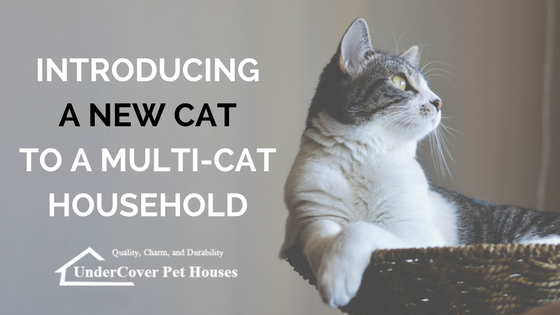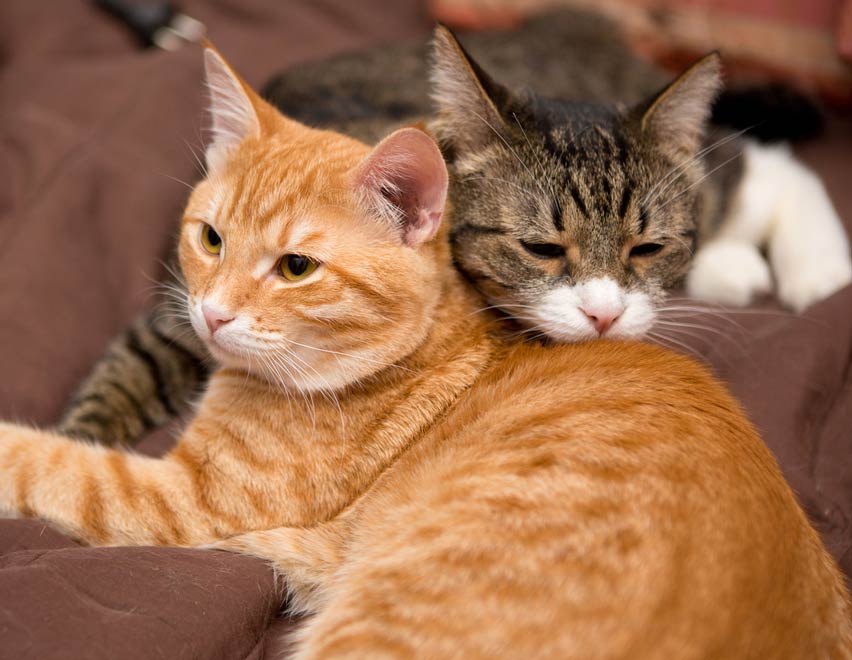Looking to introduce a Persian cat to your multi-cat household? Look no further! In this article, we will outline the best practices for a smooth and successful introduction. Whether you already have multiple cats or are considering adding another feline friend to your home, we’ve got you covered with practical tips and expert advice. From creating a calm and comfortable environment to gradual introductions and establishing territory, this article will provide you with all the information you need to ensure a harmonious integration of your new Persian cat into your existing cat family. So, let’s get started and make the introduction process as stress-free as possible!
Choosing the Right Persian Cat
If you’re considering adding a Persian cat to your multi-cat household, there are a few important factors to take into account. One of the first things to consider is the temperament of the Persian cat you’re interested in. Persians are generally known for their calm, gentle, and laid-back nature, which makes them great companions for households with multiple cats. However, it’s important to remember that not all Persians will exhibit the same temperament, so take the time to interact with the cat and gauge its personality before making a decision.
Another crucial consideration is the compatibility of the Persian cat with your existing cats. Some cats are more sociable and adaptive, while others may prefer to be the only feline in the house. It’s important to introduce the new Persian cat slowly and carefully to ensure a harmonious integration. Additionally, if your existing cats have a history of aggression or territorial behavior, it’s essential to choose a Persian cat that can handle such situations or seek professional advice.
When it comes to choosing between adopting a kitten or an adult Persian cat, there are pros and cons to each option. Kittens are generally more adaptable and can grow up with the other cats in the household, forming stronger bonds. However, they require more time and effort in terms of training and socialization. On the other hand, adult cats have already developed their personalities, making it easier to gauge their compatibility with your existing cats.
Preparing your Home
Creating separate living spaces for each cat in your multi-cat household is crucial. This means providing separate sleeping areas, litter boxes, food bowls, and water dishes. Each cat should have their own space where they can retreat to when they need some alone time. This also helps prevent resource guarding and reduces the likelihood of conflict over territory.
In addition to creating separate living spaces, it’s important to provide sufficient resources for all cats. Make sure there are enough litter boxes, scratching posts, toys, and perches for each cat in the household. Lack of resources can lead to stress and territorial disputes, so ensure that each cat has access to everything they need.
Introducing scents and pheromones can help create a more familiar and welcoming environment for your Persian cat and the other cats in your household. This can be done by exchanging bedding or using synthetic pheromone products, such as Feliway diffusers. These scents can help reduce stress and promote a sense of security, making the integration process smoother.
Gradual Introductions
When introducing a Persian cat to your multi-cat household, using a barrier method is highly recommended. This involves separating the new cat from the existing cats initially, allowing them to become familiar with each other’s scents and sounds without physical contact. You can use baby gates or a separate room for the introduction phase, gradually increasing the time the cats spend together.
Once the cats are familiar with each other’s presence, supervised interactions can be initiated. Keep a close eye on their body language and behavior during these interactions. Look for signs of aggression or discomfort, such as growling, hissing, or raised fur. If any negative behaviors are observed, separate the cats and try again later. Gradually increase the duration and frequency of these interactions as the cats become more comfortable with each other.
Positive reinforcement plays a vital role in the integration process. Use treats and rewards to promote positive associations between the cats. For example, you can give treats when the cats are calm and relaxed around each other or when they engage in positive interactions. Encouraging playtime together with interactive toys can also help build positive experiences and strengthen the bond between the cats.
While it’s important to encourage interactions between the cats, it’s equally essential to provide individual attention and quality time with each cat. This helps prevent feelings of neglect and jealousy. Spend time playing, grooming, and cuddling with each cat separately to ensure they feel loved and valued in the multi-cat household.
Managing Stress
In a multi-cat household, it’s crucial to create safe spaces for each cat where they can retreat and feel secure. These safe spaces can be designated rooms, cat trees, or cozy hiding spots. Make sure each cat has access to their safe space whenever they need it. This helps reduce stress and provides an escape from potential conflicts with other cats.
Implementing a consistent routine is beneficial for cats, especially in a multi-cat household. Feed the cats at the same time every day, maintain a regular play schedule, and establish a predictable routine for litter box cleaning. Cats thrive on routine, and it helps create a sense of stability and security in their environment.
If necessary, you can also use calming aids to manage stress during the integration process. There are various products available, such as pheromone sprays, calming collars, or natural supplements, that can help reduce anxiety and promote relaxation. Consult with your veterinarian for recommendations on the most suitable calming aids for your cats.
Issues to Watch for
When integrating a new Persian cat into a multi-cat household, there are several issues to watch out for. One common challenge is aggressive behavior. Keep an eye on signs of aggression, such as fighting, biting, or excessive chasing between the cats. Aggression can have various underlying causes, such as resource guarding or territorial disputes. Address any aggressive behavior promptly by separating the cats and consulting a professional if needed.
Resource guarding, where a cat becomes possessive over food, toys, or other resources, can also arise in a multi-cat household. This can lead to conflicts and tension between the cats. Ensure that each cat has access to their resources and monitor their behavior during mealtimes and play sessions. If resource guarding becomes an issue, consult with a veterinarian or animal behaviorist for guidance.
Inappropriate elimination, such as urinating or defecating outside the litter box, can occur when adding a new Persian cat to a multi-cat household. This behavior can be a result of stress, anxiety, or territorial marking. Provide multiple litter boxes throughout the house and keep them clean and easily accessible. If the issue persists, it’s important to consult with a veterinarian to rule out any medical conditions and address the underlying causes of the behavior.
Seeking Professional Help
If you’re facing challenges or struggling with the integration process, it’s always a good idea to consult a veterinarian or an animal behaviorist. They can provide expert advice and recommendations based on your specific situation. They may suggest behavior modification techniques, recommend medication or supplements, or provide guidance on how to approach and address any ongoing issues.
Remember that each cat is an individual with unique needs and personalities. It’s essential to closely observe the interactions and relationships between the cats in your multi-cat household. If necessary, be prepared to make necessary changes in the living arrangements to ensure the well-being and happiness of all cats involved.
Monitoring and Adjustment
Integration is an ongoing process that requires monitoring and adjustment. Observe how the cats interact and assess their relationships regularly. Pay attention to any changes in behavior or signs of distress. This allows you to intervene promptly and address any issues that may arise.
Based on your observations, you may need to make changes in the living arrangements to promote a more harmonious environment. For example, you may need to provide additional resources, rearrange furniture to create more space, or separate cats temporarily if conflicts arise. Flexibility is key, and being open to adapting the living arrangements can greatly contribute to a smoother integration process.
Tips for a Successful Integration
Patience is key when introducing a Persian cat to a multi-cat household. Allow time for adjustment and gradual progress. Building positive relationships takes time, and rushing the process can lead to stress and conflicts. Give each cat the space and time they need to acclimate to the new situation.
It’s important to provide equal love and attention to all cats in the household. While it may be tempting to shower the new Persian cat with extra affection, make sure to also spend quality time with your existing cats. Balance is crucial to prevent feelings of jealousy and competition among the cats.
Encourage peaceful coexistence by providing opportunities for positive interactions. Playtime together with interactive toys can help foster bonding and reduce tension between the cats. Additionally, ensure that each cat has access to high perches, hiding spots, and cozy beds where they can relax and observe their surroundings.
Conclusion
Introducing a Persian cat to a multi-cat household can be a rewarding experience when approached with care and consideration. Following best practices, such as considering the temperament and compatibility of the cat, preparing your home, and implementing gradual introductions, can greatly increase the chances of a successful integration.
Remember that responsible ownership plays a crucial role in maintaining a harmonious multi-cat household. By monitoring and addressing any issues promptly, providing a nurturing and inclusive environment, and seeking professional help when needed, you can ensure the well-being and happiness of all cats in your care.
A harmonious multi-cat household not only benefits the cats but also enhances the overall quality of life in your home. Seeing your Persian cat and other cats peacefully coexisting and forming meaningful relationships is a truly rewarding experience. By following these best practices, you can create a loving and supportive environment for all your furry companions.

